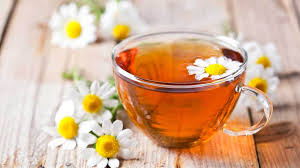In this article I am going to explain everything I’ve learned about artemesia plants and coronavirus.
A few months ago, there were speculations about the efficacy of a certain plant called artemesia annua against coronavirus. The speculations were based on its efficacy against diseases that had similar symptoms and the wide range of uses it has in treating infections.
Since then, some research has been carried out in a German lab and it suggests that artemesia annua combined with coffee is highly effective against coronavirus in cell cultures. Anecdotal stories of coronavirus treatment with artemesia annua have also been circulating.
https://www.dw.com/en/germany-scientists-test-artemisia-plant-against-coronavirus/a-53944514
While it is commonly used in folk medicine, a more jargon-rich description of its mechanisms can be found.
Artemisia annua has a recognized antiviral activity (anti HSV1, Poliovirus, RSV, hepatitis C anti-virus, type 2 dengue virus, hantavirus, human cytomegalovirus) and antiHIV in vitro thanks to the flavonoids, quercetin and dicaffeoylquinic acids it contains. These molecules have been shown to inhibit the enzymaticactivity of CLPro (Chymotrypsin-like protease), an enzyme produced by SARS-CoV-2.
The antiviral action of Artemisia annua, which is achieved by stimulating adaptive immunity, regulating the production of the pro-inflammatory cytokines prostaglandin E2 (PGE2), IL-6, IL-10, TNF alpha and increasing the genesis of CD4, CD8 and interferon gamma, involves many minerals and biomolecules: the properties of flavonoids, polyphenols, triterpenes, sterols, saponins, polysaccharides, artemisinin and its derivatives, the concentration of zinc, gallium and selenium in the plant play a role in the immune, antiviral, antioxidant and anti-inflammatory response.
https://lavierebelle.org/action-de-l-artemisia-annua-sur-l?lang=en
In 2015, a Nobel Prize was given to the researcher who proved the antimalarial activity of the plant, but because pharmaceutical companies cannot patent a plant or a tea, they spread misinformation that the medicinal compound was not soluble in water and that it must be processed into pill form for it to be effective. Decades of use as a tea proved their assertions wrong.
There are many types of artemesia plants and perhaps the most famous of all of them is artemesia absinthe. It was used in a drink that soldiers used to treat malaria and then they brought the drink back home because they enjoyed its hallucinatory, psychoactive effects.
The more European version of this plant is artemesia vulgaris, better known as mugwort, a plant that is well known to improve digestion and improve lucid dreaming and creativity.
Artemesia annua, the most potent of the medicinal varieties, is native to China and it it is not known for its psychoactive effects. It is used as a treatment for fever, cancer, colds, flus, fungal infections, worms, and most popularly, malaria. The dosage for malaria is to brew a liter of strong tea that steeps for at least 20 minutes and drink it all before the active components degrade. When this treatment is carried out over the course of a week, the duration and intensity of malaria is dramatically reduced.
The reason that artemesia annua seems to have the best medicinal profile is that it is high in a drug called artemesinin, a common pill given for malaria. Artemesia annua has about five times more artemesinin compared with artemesia vulgaris or artemesia absinthe.
When I started following this story, I, of course, looked online to see where these things could be purchased and I found that artemesia vulgaris (mugwort) and artemesia absinthe (wormwood) are widely available as a tea, but artemesia annua (sweet wormwood or sweet annie) is not widely sold as a tea — athough some vendors selling it as an extract or tincture have popped up since the rumors about it being a coronavirus treatment started spreading.
A couple of months ago, I went ahead and bought some artemesia vulgaris (mugwort) and artemesia absinthe (wormwood) tea since they were inexpensive.
I also bought a small packet of artemesia annua (sweet wormwood or sweet annie) seeds which I planted in small plastic pots (about 50). I now have a bunch of baby plants which, if repotted and properly cared for will grow to up to 6 feet tall over the course of 200 days.
It is my plan to give the plants to my neighbors once they are too big for the little plastic pots and they can replant them in larger containers.
if all goes well, they will all have large, sweet annie bushes growing in their living rooms by Christmas and, if anyone gets sick, they will have an easy source of medicinal tea or smudge. In the past, people even soaked a towel in an artemesia tea and put it on a sick person’s forehead to help break their fever.

Of course, I’ll be using Aspirin (willow bark) to control fevers – I’m not anti-technology, I just like the sense that I know what I’m using when I have a plant that I grew myself. Who knows what might be in some tincture from the internet? How many companies will re-label their teas to trick customers?
I’ve also gotten some white sage to burn as a smudge, since I’ve read that it has traditionally been used to clear out viruses from the air and there is evidence that the viral load to which you are exposed does have an impact on the severity of the disease. If you have a house full of sick people, clearing the air may be helpful.

Rosemary, echinacea, sage, and lavender are growing in the garden, and they can also be used to make teas, tinctures, and smudges, although I’ve heard that plain old chamomile tea is the best medicine for many types of viruses. As with all medicines, it is best not to combine them.

Even if it doesn’t work, I feel prepared and find that the process of growing a plant that might someday protect people is very comforting.
